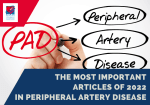Severe tricuspid regurgitation (TR) is difficult to manage and is associated to high morbimortality. Surgical repair is complex and not free from complications: its mortality rate ranges from 5 to 20% and depends on series, surgeon and center expertise. Edge-to-edge repair with clips has become a valid alternative to treat this disease, but most data...
ACC 2023 | PULSE-AF
Catheter ablation is an effective treatment for patients with atrial fibrillation (AF) refractory to the standard medical treatment. Verma et al. conducted a global, prospective, multicenter, nonrandomized study in which patients were operated with the PulseSelect system—pulmonary vein isolation using a nonthermal ablation system—and followed-up at 12 months. The system consists in nonthermal ablation, discharging...
ACC 2023 | TRILUMINATE Pivotal: Edge-to-Edge Treatment in Patients with Tricuspid Regurgitation
Tricuspid regurgitation is a common and impairing disease. Optimal medical therapy (OMT) is limited, valve surgery is complex, and mortality is not low. Dr. Paul Sorajja presented the results of the Pivotal Triluminate study to demonstrate the safety and efficacy of edge-to-edge treatment (transcatheter edge-to-edge repair, TEER) in tricuspid regurgitation. Three hundred and fifty patients...
ACC 2023 | COAPT Study: 5 Year Followup after Transcatheter Repair of Secondary Mitral Regurgitation
The five year outcomes of the multicenter open label COAPT (Cardiovascular Outcomes Assessment of the MitraClip Percutaneous Therapy for Heart Failure Patients with Functional Mitral Regurgitation) were presented at ACC 2023; it included 614 patients with cardiac failure (CF) and moderate to severe (3+/4+) symptomatic secondary mitral regurgitation, despite medical therapy. Patients were randomized 1:1...
Stent Revascularization in Femoropopliteal Disease: An Analysis of Clustered Randomized Trials
A study compared pooled data of claudication and critical ischemia patients treated with stenting vs. by-pass surgery in femoropopliteal disease. The main objective of revascularization in femoropopliteal disease is to improve the quality of life and functional capacity of claudication patients who did not respond to medical treatment, and to save the affected limb in...
The most read articles of january in solaci.org
These were the most read articles of interventional cardiology in solaci.org. Real-World Revascularization Strategy for Left Main Coronary Artery: Surgery or PCI? There are many current randomized trials comparing percutaneous coronary intervention (PCI) with myocardial revascularization surgery (MRS) for the treatment of left main coronary artery disease (LMCAD). Real-World Results of Different Devices for TAVR Transcatheter aortic valve replacement (TAVR) keeps...
IN.PACT Study | Should We Start Using DCBs More Frequently in Cases of Femoropopliteal Disease?
With the new devices (drug-eluting balloons [DEB], drug-eluting stents [DES], and atherotomes) percutaneous treatment is becoming the first line of approach for femoropopliteal disease, especially when dealing with not very long total occlusions. Randomized studies and registries on the use of drug-coated balloons (DCB) in femoropopliteal disease are currently available, but their evolution beyond 2...
Long-Term Evolution of Hybrid Coronary Revascularization
Currently, myocardial revascularization surgery (MRS) and percutaneous coronary intervention (PCI) are the available strategies for multivessel coronary artery disease. However, an alternative strategy has long been developed, called hybrid coronary revascularization (HCR), where the anterior descending artery is bypassed with a graft from the mammary artery and the rest of the lesions are treated by...
The Most Important Articles of 2022 in Peripheral Vascular Disease
Discover the most important scientific articles of 2022 in peripheral vascular disease in our website. EMINENT Trial | Stent Eluvia vs BMS in Femoropopliteal Territory Endovascular therapy in femoropopliteal territory has become the standard, mainly with self-expanding stents, aimed at preventing early vascular recoil and late constrictive remodeling. Thromboendarterectomy vs. Endovascular Therapy in Common Femoropopliteal...
Secondary Mitral Regurgitation: Stages of Heart Failure and Prognostic Implications after Transcatheter Edge-to-Edge Repair
We are already familiar with the strong impact of secondary mitral valve regurgitation (SMR) in survival and quality of life. Most of these patients present heart failure (HF) with reduced ejection fraction (HFrEF). Stages of heart failure based on extra-mitral cardiac involvement has been shown relevant. There is also extensive research on aortic valve disease...







